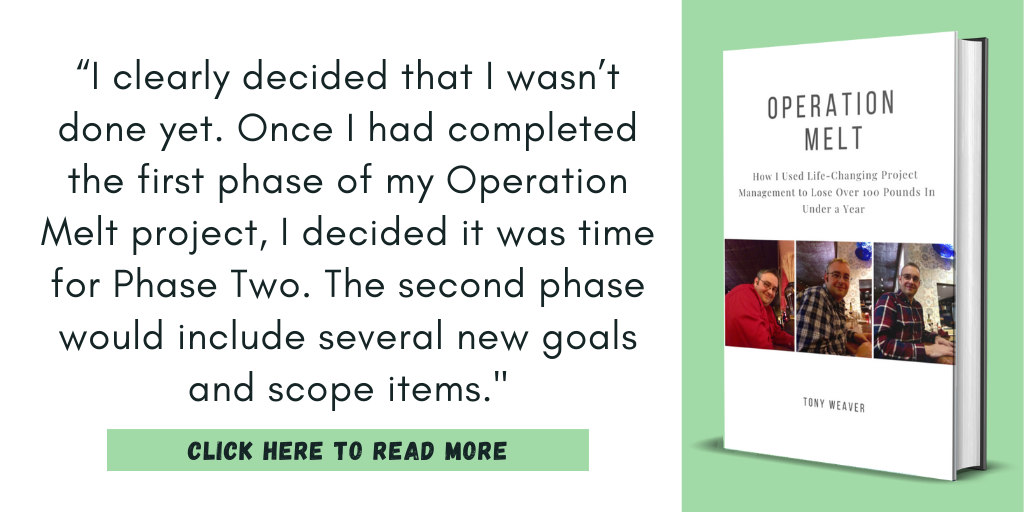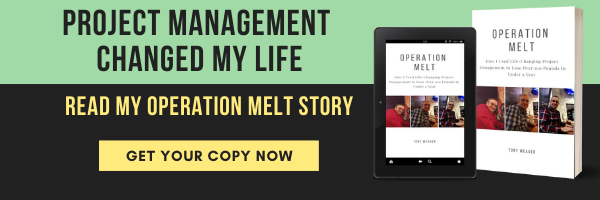You are in control of your happiness; it is a choice. One easy step to help you make the right choice is to avoid a key self-improvement mindset trap. By borrowing from a software development concept, you can separate your defects from your enhancements. The results may surprise you.
Learn how it works in this week’s Goal Success by Choice.
Amuse Bouche
Before we get to today’s post, I offer you this light “amuse-bouche” to entertain your mind before we get down to business. Like any other amuse-bouche, you may hate my “dad joke,” but it is worth every penny that you paid for it, right?
Did you know that children are born with 4 kidneys? When they grow up, 2 of them become adult knees.
Goal Success by Choice
Do you have dreams that you are trying to make come true? Do you have a goal that you are trying to crush? Success doesn’t happen by chance. Success is a series of choices that can make you unstoppable. Goal Success by Choice helps you make these choices to move you closer to your goals.
Are you ready to help build a world where no goal dies of loneliness?
Mindset Trap: You’re Building A Better You, Not Fixing Yourself
Stop trying to ‘fix’ yourself; you’re NOT broken! You are perfectly imperfect and powerful beyond measure.
Steve Maraboli
I have been a project manager for nearly twenty years and have managed a lot of different types of projects. Over my career, I have frequently found myself managing software development or implementation projects. While each project is unique, these projects tend to have a similar structure/flow.
- The customer and developers agree on what will be built through requirements, design or a specification.
- The developers go off and build what was requested and bring it back to the customer.
- The customer then reviews and tests the software to ensure it meets the initial requirements and works properly.
Spoiler alert: the testing process always finds things that don’t meet the customer’s expectations. Sometimes these are items that are clearly broken or malfunctioning. Occasionally they will find someplace where the developer missed one of the requirements. Whenever the software isn’t functioning as designed, it is called a “defect.” Most defects need to be fixed before the software can be released to its end-users at go-live.
Not every item found during testing is a defect.
When seeing the software for the first time, the customers often find additional items that would make it more useful. In this scenario, the software is working as designed. But, once they got to see the “real” product, the customer discovered additional valuable features. These items are called enhancements. Traditionally, most enhancement requests are deferred until future projects or releases. If software developers were to accept all enhancement requests, no software would ever be finished and launched.
As most of us know from the endless stream of updates we receive for the software we use, no software is never truly “done.” The enhancement process continues for years as people use the software.
By continually enhancing software, it keeps improving and becomes increasingly efficient, effective and useful.
Defects & Enhancements
While humans are certainly not computers, they can often provide powerful metaphors to understand other facets of our lives. By borrowing the concept of defects and enhancements, we can avoid falling into a mindest trap with our personal development and self-improvement journies.
Not every personal development goal is about fixing something that is broken. None of us suffers from many defects; we aren’t broken!

Most self-improvement is about enhancement; we are just trying to continually improve ourselves.
I will illustrate using a story from my weight loss journey. When I went to that first appointment with my doctor, I stepped on the scale, saw 325 pounds and then learned a slew of unpleasant health information (see D(octcor) Day: 6/15/2017). I discovered a variety of health and fitness defects that required fixing.
I set out on a journey to get healthier and lose over one hundred pounds in under a year. I accomplished that goal in just nine months.
After achieving my goal, I decided to keep going and lost another thirty pounds. At this point, I was no longer correcting a defect. I was now pursuing enhancements or continual personal improvement.
Even today, four-plus years after achieving my goal, I continue to work to maintain my weight, build my muscles and increase my performance. None of these things are defects, and nothing is broken. I am just continuing to improve (or enhance) myself.
There are countless areas of my life where I pursue enhancements, but very few areas with true defects. There are even fewer (maybe zero) high-severity defects that require an urgent fix.
Unfortunately, my brain (like many of us) is focused on fixing problems and checking them off a list. So, I have to regularly remind myself that I am enhancing myself, not fixing myself.
- I am not broken.
- My life is not broken.
- My health and fitness are not broken.
- My contribution to others is not broken.
Like everyone, I have things that I want to improve and am a constant work in progress. Keeping a solid perspective about which of these things are defects and which are enhancements can mean a world of difference to our happiness.
Who Is In Charge Here?
Want to know a controversial secret about life? There is one person who has one hundred percent control of your happiness. You! Plus, everything you need to achieve happiness exists within one square foot of real estate. Your brain!
Your mindset and perspective on life are the secret keys to your happiness.
Getting back to defects and enhancements, it’s your choice how you view the things you are working on improving. If you look at them as defects or broken things you need to fix, you will constantly focus on fixing your broken self. You will believe that there is something wrong with you. This means you will never be happy with where we are – and isn’t that the real goal?
Consider all of the things you are working on improving in your life. Are you working to improve your health, career, wealth, relationships, skills, or anything else? (Hint, the Wheel of Life is an excellent tool to help you with this. Visit the OperationMelt.com Resources page for a free download.).
Ask yourself a simple question: can you live a happy, healthy and safe life without changing this?
If the answer to the question is “no,” then ask yourself what is the smallest change you can make in this area to change the answer to yes. Or, in software project terms, what is your minimum viable product. Focus only on correcting that small item, not going beyond.
Once you have corrected the small things and you can answer “yes” to the simple question, you can focus on continuing to enhance that area.
Want to avoid the defect mindset trap? Keep reminding yourself that your life is full of things you are enhancing and nearly void of defects. You aren’t broken. You are doing just fine and are simply on a path of continuous improvement.
So What?
You are in control of your happiness; it is a choice. One easy step to help you make the right choice is to avoid a key self-improvement mindset trap. By borrowing from a software development concept, you can separate your defects from your enhancements. The results may surprise you.
Do you need help sorting your defects and enhancements? Hit me up!
Click Here to learn more about my Operation Melt coaching services.
Beware of the Robots!
Was this post helpful or interesting to you? Do you want to read more? Don’t trust it to the social media algorithms.
Defeat the robots by joining my email list below and get these posts delivered directly to your inbox every week.





 Meet Coach Tony
Meet Coach Tony